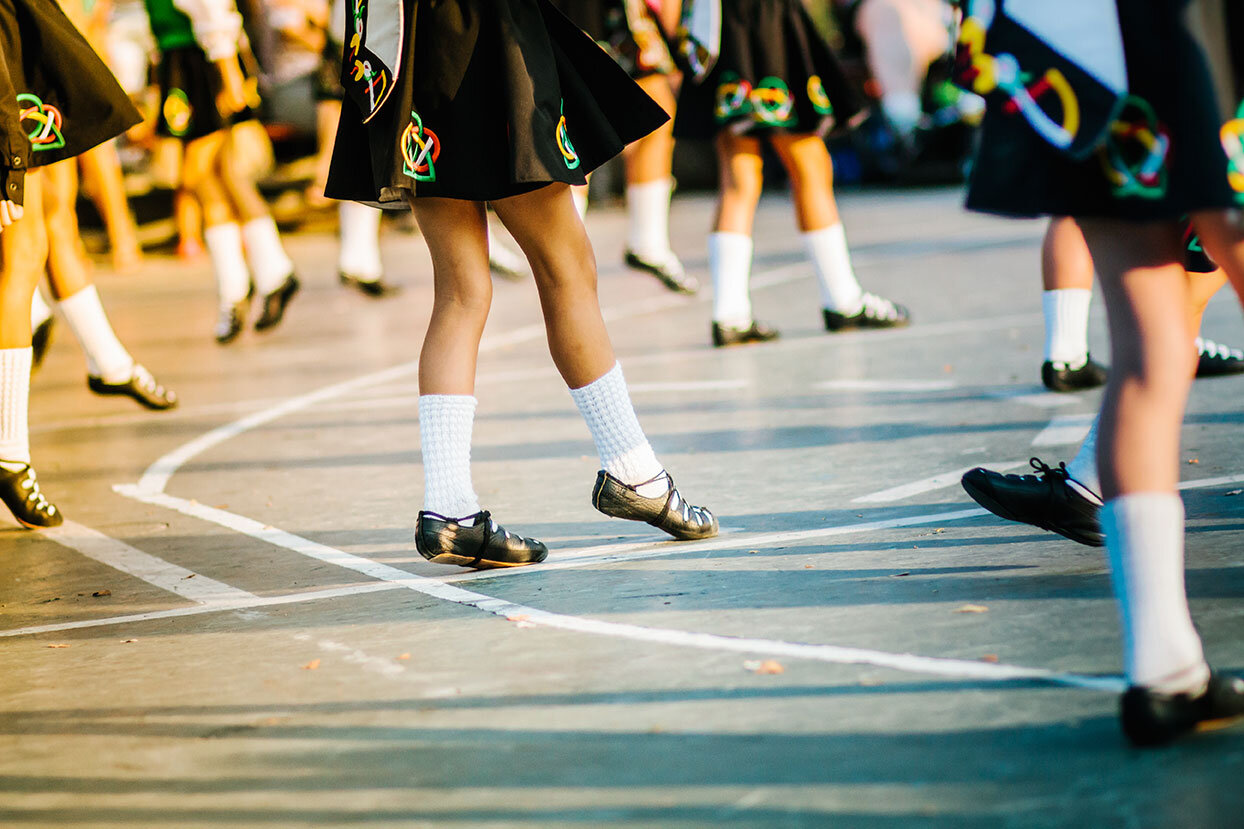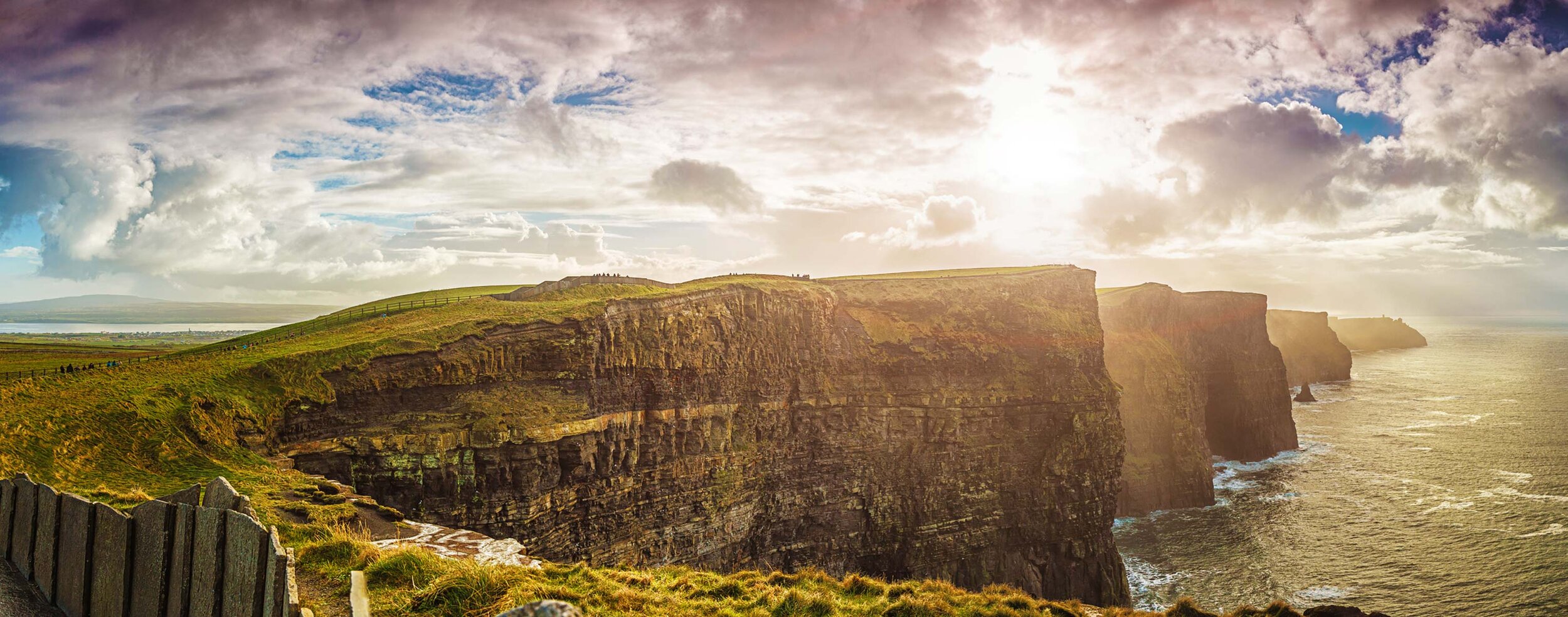
Celtic Dance…
Explore dancing in the Celtic Nations…
Introduction
A strong dance tradition permeates all the Celtic nations and many of the styles and forms are common to all. But each region introduces its own particular twist – for example in the informal gatherings known a cèilidh (Scotland) céilí (Ireland) troyl (Cornwall) and twmpath (Wales).
In Ireland, Scotland and Cornwall, you will see step dances that share many features in common. And dances centred on particular festivals and times of year – among them, Cornwall’s furry dances and the Isle of Man’s hop-tu-naa – remain vibrant reminders of centuries old traditions.
Dance remains a powerful expression of national identity as well. Perhaps nowhere more so than Brittany, where the communal element of dance has helped to bolster the region’s efforts to retain its distinctiveness in the face of a centralising national government.
From the huge popularity of Irish and Scottish dancing in the United States to the global behemoth that is Riverdance, dance has become a beacon for Celtic culture around the world.
Breton
Dance and music have always been more than just a form of entertainment in Brittany. They are also one of the most powerful expressions of identity in a country that has frequently been hostile to efforts to sustain Breton individuality.
In the largely agricultural society, dances frequently reflected collective activities that were part of the routine of daily life. For example, beating the earth floor of a new or repaired house or treading down the ground to prepare a threshing floor. The most typical dance pattern is a circle and, as in society, it only works properly if all the dancers are in the correct place. The individual plays a small but vital role in the success of the endeavour.
Of course dances were also held to celebrate traditional social events such as weddings and as part of religious festivals. And while themes are common across Brittany, traditional dances do vary by geographical region with each ‘pays’ having a different variety of a more widely spread dance type.
The second half of the 20th century saw the start of a strong Breton dance revival that continues to this day. The main expression of this is the fest-noz, or night festival, and the fest deiz (day festival). Since the reinvigoration of the fest-noz in the 1950s, people have gathered in large numbers to perform circle dances from dusk to dawn, accompanied by traditional acoustic instruments such as the accordion, and the biniou (a kind of bagpipe) and the bombarde (similar to the oboe).
Around a thousand fest-noz take place each year, with hundreds or even thousands of participants. In 2012, UNESCO inscribed the event into its ‘List of the Intangible Cultural Heritage of Humanity’, saying, “The Fest-Noz is characterized by an intense camaraderie among the singers, musicians and dancers, significant social and intergenerational diversity, and openness to others. Today, the Fest-Noz is at the centre of an intense ferment of musical experiences and has spawned a veritable cultural economy.”
Cornish
Dancing has been an important part of Cornish culture for centuries. Legends sprang up in mediaeval times that the standing stones making up the many ancient stone circles scattered across the landscape were people who had literally been ‘petrified’ for dancing on the Sabbath. The megaliths of the Nine Maidens on the Penwith peninsula are one famous example.
There are three distinct types of traditional Cornish dances, all of which have something in common with traditions elsewhere in the Celtic world.
The Cornish form of step dancing is known as ‘scoot’ after the metal plates screwed to the heels and toes of miners’ shoes to increase their life. Like the hard-soled footwear of the Irish step dancers, the performers took advantage of the rhythmic sound they produced. While scoot was traditionally very informal, it has been enthusiastically embraced by modern groups and new dances have been written using traditional steps.
Furry dances are associated with particular dates in the calendar – the most famous being the Helston Furry Dance that takes place every year on the 8th May. The Furry dance is essentially a procession of couples and what makes it distinctive is that dancers travel through the streets of a town or village, often processing through pubs and houses along the route. While the dances are often associated with the west of Cornwall, there is plenty of evidence to show that they were held all over the Duchy at different times of the year.
Finally we have the social dances in which you’ll often find a ‘troyl’, the Cornish equivalent of a céilidh or barn dance. The word comes from the Cornish for a whirl, spiral or reel. While they can refer to general social dances, troyls are often associated with particular areas or occupations. In fishing communities, for example, a troyl often marked the end of the pilchard season.
Today, dance is at the forefront of Cornwall’s cultural outreach to the world. Cornish dance groups frequently participate in major events like Brittany’s Festival Interceltique in Lorient.
Irish
The world of Irish dance today is varied and vibrant. Dances are either solo or in groups and are put on for performance, competitive or purely social reasons.
The incoming Gaels and Celts brought distinctive dance styles to the island. But it was really in the 18th century, with the arrival of the ‘dancing master’ and the emergence of the distinctive hornpipe rhythm alongside the introduction of the fiddle, that the Irish dance we know to today developed.
The most famous style is undoubtedly step dance, with its characteristic contrast of a rigid upper body and rapid, intricate footwork. Dancers wear either hard or soft-soled shoes, but for many, the former are most well known thanks to the loud, rhythmic clicks they produce. Costumes – particularly the girls’ dresses – have become increasingly ornate and traditional Celtic motifs feature prominently.
This new style of dance became an important means for emigrants to keep in touch with their Irish heritage and identity. In the 19th and 20th centuries, step dance competitions sprang up throughout America. Canada, Australia and New Zealand quickly followed suit.
Step dance was given another huge boost from the mid 1990s with the popularity of the Broadway show, Riverdance. First performed in 1994 during the Eurovision Song Contest in Dublin, it went on to become the global phenomenon it remains today.
The other important dance tradition is the céilí, or social dance. Performed by between two and sixteen people, or by an unlimited number of couples, the céilí revolves around a set of traditional formations. In a social setting, céilís are often "called" with the upcoming steps announced during the dance. Céilí dances are typically accompanied by traditional instruments such as the Irish fiddle.
Isle of Man
Manx dancing underwent something of a revival in the 20th century. Though it obviously has a much longer history, the collection and publication of Manx folk dances between 1938 and 1983 by cultural activist Mona Douglas was a key catalyst, alongside the Manx folk revival of the 1970s. From the latter emerged a number of dance groups that reconstructed many of the dances from Douglas’ researches.
Perhaps the most widely performed Manx dance today is the hop-tu-naa, which is connected to the festivities of the same name held at the end of October. It is a basic processional dance for any number of two pairs of dancers. This simplicity allows it to be taught to children in Manx schools from a young age and it is seen both at both céilís and at many of the community events organised across the Isle of Man for hop-tu-naa itself.
The vibrant nature of Manx dance today is reflected in the existence of five dance groups ranging from the very traditional to contemporary in both costume and style. Manx dancers represent their island at inter-Celtic and international festivals around the world, performing in competitions and giving demonstrations.
Scottish
Traditional dance is a hugely vibrant and popular pastime in Scotland today. There are numerous variations throughout the country and many of the styles have much in common with their Irish counterparts. However, four main categories cover the majority of Scotland’s dance scene.
As in Ireland, the cèilidh – literally meaning ‘a social visit’ – can take place in a house, a village hall, community centre or a much larger venue and involves the dancing and the playing of Gaelic folk music. Dances are done in couples or in sets of three to eight people and in order to involve as many as possible, they are relatively straightforward. To make sure nobody is left out, there is usually a caller to explain the steps. A cèilidh is a very common feature of a Scottish wedding, accompanied by a cèilidh band of course.
Scottish Country Dancing is a more formal thing altogether, frequently taking place in grand houses and castles. A mix of formal 18th and 19th century styles and traditional Scottish reels, dances typically comprise four or five couples who face each other to form ‘sets’. One couple progresses to the bottom and the dance is then repeated until all have returned to their starting positions.
Highland Dancing is an energetic discipline requiring a mix of strength and balance to execute the jumps and intricate foot and arm work that make it so distinctive. The sword dances and the Highland Fling are iconic parts of Scottish culture. Highland dancing competitions are at the core of the many Highland Games festivals.
The final discipline is step dancing, which is perhaps less known than the others. Like its Irish counterpart, it is performed in hard-soled shoes with a rhythm tapped out to music played on pipes or fiddle.
Welsh
Folk dancing was once common throughout Wales, with the ordinary people gathering for open-air events and festivals as the upper classes danced at grand balls. But it very nearly disappeared altogether in the 18th and 19th centuries thanks largely to the efforts of the Nonconformist sects to eradicate what it saw as a sinful custom. This, combined with the decline of rural communities that accompanied the Industrial Revolution, meant that by the 20th century, folk dancing was no longer a part of everyday life.
Realising that folk dances were about to disappear without trace, a handful of people started to record and publish details of traditional dances. Gradually, helped by amongst other things the introduction of folk dance into the National Eisteddfod and the establishment of the Welsh Folk Dancing Society in 1949, traditional forms of the discipline started to make a comeback.
In the 1960s and 70s, the introduction of local ‘twmpaths’ (barn dances or ceilidhs) took folk dancing to a younger audience and today there are more than twenty adult dance teams and hundreds of youth teams in schools across the country. The dance competitions at the Eisteddfod attracts thousands of participants and there are numerous other festivals as well as events around traditional celebrations.
One other dance tradition that merits a mention is step or clog dancing. Originally performed by farmers and slate quarry workers, it differs from other step dance traditions in that, alongside complicated step routines it also incorporates tricks, for example, snuffing out a candle flame with the dancer's feet.

